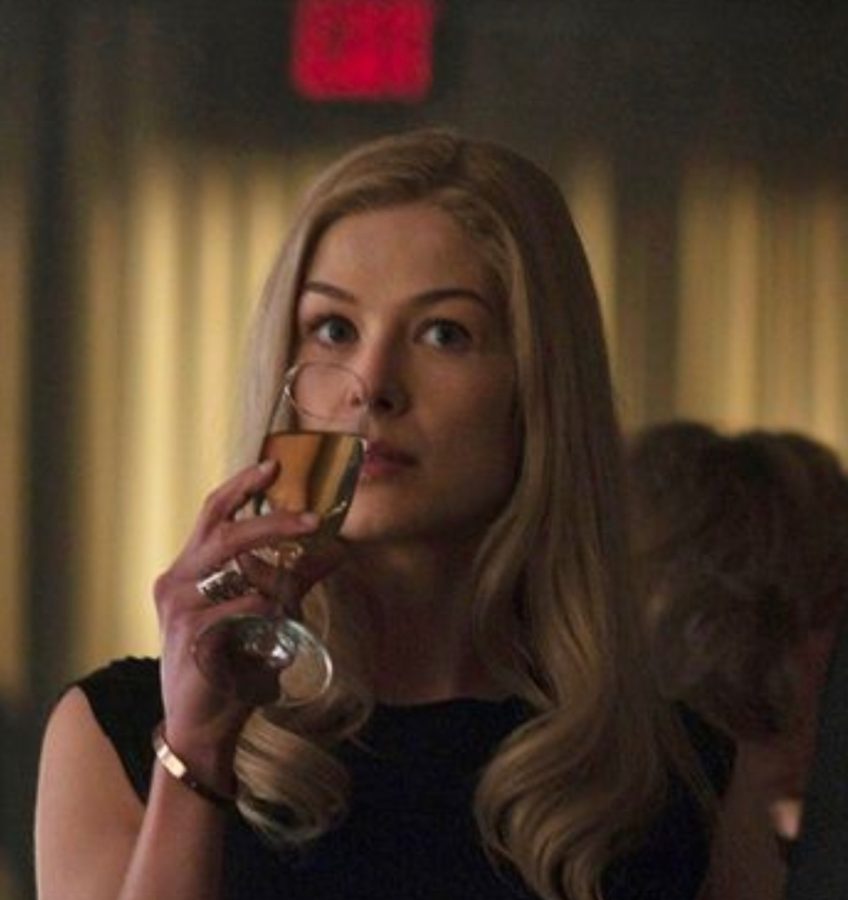Anti-heroines combat the idealized female image; here’s why

More stories from Coco Corey
A photo of female protagonist, Amy Elliot-Dunne, in the movie Gone Girl.
She’s a narcissist. She’s crazy. She’s a rule breaker. She’s power-hungry—and I can’t help rooting for her. You’ll find her testing limits, thinking only of her pure ambition, and exacting brutal revenge on her enemies. She is complex, unapologetic, and strong. She is increasingly being portrayed in books, TV series, and movies. She is an anti-heroine. Anti-heroines have us cheering them on, adding realism to the way females are portrayed and begging the question: why aren’t there more of them?
For my AP Literature class, I just recently read the novel Jane Eyre by Charlotte Bronte, a story that portrays this controversial character through its protagonist, Jane Eyre, who is one of many anti-heroines in literature and in the media, one that defies social structure and exhibits feminist viewpoints.
We see anti-heroines in movies, books, and on TV. They are characters that exemplify the complexity of human character; they exhibit the ugly—and often amoral—side of us, but they also show vulnerability.
“An anti-heroine is a female protagonist who is not confined by the expectations put upon them, someone who makes ‘unconventional life choices’…They all break the feminine mold of their time…none of them will tow the line, they follow their own desires, they stand up for themselves. It is exactly this anti-heroic ‘bad behaviour’, and determination to ‘defy conventional ethical codes’ that makes them real and relatable” (Daley, 2019).
They are flawed characters that we can’t help but love. They are efficacious; they don’t care what anyone thinks. They own their femininity, but are also as ruthless as any male character, blurring the constraints of societal gender roles to test our bias as to what equality truly means.
In the popular television series Gossip Girl, viewers come to love the character Blair Waldorf. She’s every bit as formidable as her male replica, Chuck Bass. She is just as—or more—underhanded and narcissistic. Most of the characters in Gossip Girl are imperfect. They have it all in terms of wealth, but can’t seem to find a way to give back to anyone. Waldorf is one of the worst; she is petty and devious. Yet, like Chuck, we can’t help but root for her. There is still something persistently endearing about Blair. Behavior that society would tolerate from the male, Chuck, is now expected to be tolerated in his female reflection.
Women aren’t perfect, so why have writers overwhelmingly felt the need to portray their female protagonists as pristine? My favorite characters are flawed. These characters include Hester Prynne, the adulteress in The Scarlet Letter and Miranda Priestly in the book and movie The Devil Wears Prada. One stood stoic and proud, despite violating all moral codes of her time and being shunned by her community. The other rejected any aspect of nurturing her employees, instead running a magazine empire in her own way—with no tolerance for mistakes. While they have nothing in common, both rejected social codes and stood their ground.
Genius writer Gillian Flynn introduced most of the world to what might be the greatest anti-heroine to date in “Amazing Amy” in the book and the movie Gone Girl.” Flynn really nailed the anti-heroine when she created a female with psychopathic tendencies that kind of made sense and that we were actually almost okay with. What more could one ask from an anti-heroine?
This past summer, on TikTok, a trend went viral where women would record themselves doing things and ask viewers if they were “written by a woman” or a “written by a man.” Typically, when girls are told they are written by a man, it enunciates that they portray how men think women act. These characters are generally hyper-sexualized and unrealistic, showing what women look like through the heavily idealized male gaze. Written by a woman, however, recognizes the character as dynamic and fully formed, not an accessory or pawn in another’s story. These characters are realistic, and they don’t depict a false narrative of how women act.
At last, the media is providing social commentary on the unrealistic tropes continually perpetuated by literature and visual works. The “perfect” depiction of women slides far from reality and highlights the difference between the male and female gaze. The idealized female figures are unrealistic, sexualizing women and undermining their need for intellectual stimulation; anti-heroines are on the rise, and they won’t be stopped easily.

Coco Corey is a senior entering her second year writing for The Central Trend. Coco plays on the tennis team, and she is also one of the four student section...


























































































